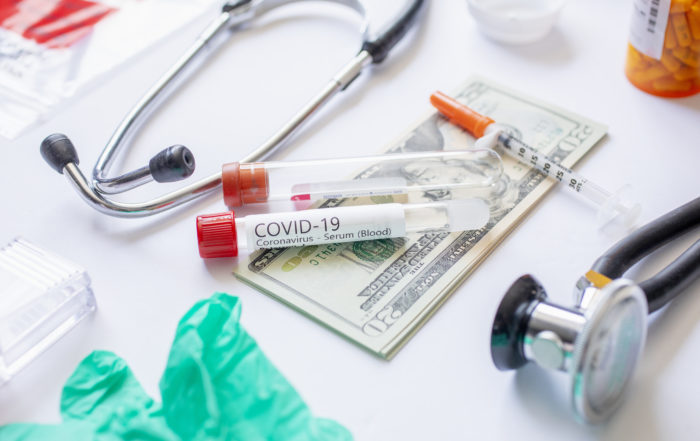
Lessons from Recent Medical Device Criminal Resolutions
By Jennifer Bragg, Maya Florence, and Jessica Reese
The U.S. Food and Drug Administration (FDA) has a broad range of enforcement tools at its disposal. The most powerful of these tools—criminal liability—is generally thought to be, and often is, reserved for entities exhibiting willful disregard for the laws and regulations enforced by FDA. In the past eighteen months, FDA, together with the Department of Justice (DOJ), has announced the resolution of three criminal actions against medical device manufacturers. Two of these resolutions—involving duodenoscope manufacturers Olympus Medical Systems Corporation (Olympus) and Pentax Medical Company (Pentax)—involve violations of the Federal Food, Drug and Cosmetic Act (FDCA) that, as described in the charging documents, do not appear to involve willful misconduct, in contrast to the third resolution, involving ACell Inc. (ACell). Examining these three resolutions together offers a timely reminder of the broad reach of FDA’s criminal authority and its willingness to pursue criminal cases where it perceives a significant risk to public health, including in cases that may not reflect the types of willful disregard generally associated with criminal resolutions.
The Olympus Resolution
On December 20, 2018, Olympus and one of its former senior executives, Hisao Yabe, pleaded guilty to distributing misbranded medical devices in interstate commerce in violation of 21 U.S.C. § 331(a).[1] Olympus is one of three manufacturers of duodenoscopes in the United States. Duodenoscopes are flexible tubes with a light, camera, and forceps elevator at one end. Because the scopes are reusable, they must be cleaned—or reprocessed—in accordance with the manufacturer’s instructions to avoid the buildup and transmission of bacteria. DOJ’s criminal action against Olympus followed a lengthy investigation into the safety of duodenoscopes, which began in the fall of 2013 and focused on the efficacy of cleaning instructions provided by scope manufacturers.[2]
DOJ charged that Olympus’ Q180V duodenoscopes were misbranded under 21 U.S.C. § 352(t)(2) because Olympus failed to timely file medical device reports (MDRs) regarding three separate patient infections at hospitals in Europe in 2012.[3] To resolve these charges, Olympus agreed to pay $80 million in fines and $5 million in criminal forfeiture, as well as undertake extensive compliance reforms.[4] According to the information, in March 2012, an Olympus subsidiary in the Netherlands was notified that approximately twenty-two patients at the Erasmus Medical Center in the Netherlands were infected with drug-resistant bacteria after the same Q180V duodenoscope was used for their procedures. [5] An expert from the Delft University of Technology examined the scope and reported that the scope’s tip had various cracks, corners, and crevices that could harbor bacteria and were difficult to clean properly.[6] The expert’s final report recommended immediate further investigation of all Q180V scopes and updating the cleaning instructions.[7]
The FDCA requires that a medical device manufacturer file an MDR with FDA within thirty days of receiving information that suggests the manufacturer’s device may have caused or contributed to a death or serious injury.[8] This requirement applies even to events occurring outside of the United States if the device is distributed in the United States. Additionally, if the manufacturer later learns of information that, if known at the time, would have been required to be included in the initial MDR, the manufacturer must file a supplemental MDR within thirty days of learning such information.[9] DOJ asserted that although Olympus appropriately filed initial MDRs regarding the Erasmus infections, it failed to timely file supplemental MDRs after receiving the Delft expert’s report.[10] In addition to the Erasmus infections, Olympus was also charged with failing to timely file MDRs regarding two other infections associated with its Q180V duodenoscopes at hospitals in France in 2012.[11]
Notably, the Olympus information did not assert facts suggesting that the company’s failure to timely file MDRs was willful. Rather, the information states that Olympus employees lacked sufficient training to understand the company’s reporting obligations under the FDCA.[12] In early 2012, Olympus transferred the responsibility of filing MDRs for adverse events occurring outside of the Americas from personnel in the United States to personnel in Japan.[13] According to the information, these employees were provided “minimal training” regarding their new responsibilities, leaving them uncertain about what to include in MDRs and when supplemental MDRs were required.[14] As a result of this uncertainty, Olympus failed to file MDRs, which rendered its Q180V duodenoscopes misbranded and led Olympus to agree to pay $85 million in criminal fines and forfeiture.
The Pentax Resolution
On April 7, 2020, Pentax entered into a three-year deferred prosecution agreement (DPA) to resolve charges that it had introduced misbranded medical devices into interstate commerce in violation of the FDCA.[15] Pursuant to that DPA, Pentax will pay a $40 million criminal fine and $3 million in criminal forfeiture.[16]
The Pentax and Olympus resolutions exhibit many similarities. The government charged that—like Olympus—Pentax’s duodenoscopes were misbranded under 21 U.S.C. § 352(t)(2) because Pentax failed to file timely MDRs regarding infections associated with the scopes.[17] On June 25, 2013, Pentax allegedly learned that four patients at Advocate General Hospital in Chicago, Illinois were infected with drug-resistant bacteria after the same Pentax duodenoscope was used for their procedures.[18] According to the criminal complaint, Pentax did not file MDRs regarding those infections until September 2013, more than thirty days after it learned of the infections, in violation of the FDCA.[19] The following year, on or about June 7, 2014, Pentax learned that four patients at Massachusetts General Hospital in Boston were infected with E. coli after the same Pentax endoscope was used for their procedures.[20] The complaint asserts that Pentax again failed to file MDRs within thirty days of learning of the infections.[21] As with Olympus, the government did not assert that the company’s failure to timely file MDRs was willful. Instead, the complaint stated that the MDRs were not timely filed because the Pentax employees responsible for filing such reports misunderstood the company’s responsibilities under the FDCA.[22]
Unlike in the Olympus case, the government also charged that four of Pentax’s endoscopes were misbranded because Pentax distributed the scopes without revised, FDA-approved cleaning instructions. According to the complaint, Pentax went through the process of getting FDA clearance for revised instructions for use (IFUs) for four of its duodenoscopes during 2013 and 2014, which required hospitals to take additional cleaning steps.[23] Thereafter, Pentax was required to distribute the four scopes with the newly approved IFUs but instead continued to use the old IFUs for eighteen months.[24] According to the complaint, Pentax deliberately chose not to distribute the four scopes with the revised IFUs due to fears that the additional steps would lead to longer reprocessing times and, ultimately, cause customers to switch away from Pentax.[25] Notably, however, the DPA expressly acknowledged that Pentax voluntarily advised FDA about the failure to ship the approved IFUs and then fully disclosed this issue to DOJ.
ACell Resolution
The June 2019 ACell resolution provides a notable contrast to the foregoing resolutions. ACell pleaded guilty to one misdemeanor count of failure and refusal to report the removal of a medical device in violation of the FDCA and paid a $3 million criminal fine.[26] The ACell resolution also resolved civil False Claims Act and Anti-Kickback Statute allegations relating to the promotion of ACell’s devices,[27] for which the company agreed to pay $12 million and entered into a Corporate Integrity Agreement with the Office of the Inspector General of the United States Department of Health and Human Services.
The government charged ACell with conducting a “silent recall” of its topical wound treatment medical device, MicroMatrix, in violation of its obligations under the FDCA.[28] Medical device manufacturers are required under 21 U.S.C. § 360i(g) to notify FDA of any removal of a device that is undertaken to reduce risks posed to patients by the device. Despite this requirement, ACell removed certain sizes of MicroMatrix from the market—after discovering that they contained high levels of endotoxins that posed a danger to patients—but failed to notify FDA of this removal.[29] Notably, unlike in the Olympus and Pentax resolutions, the government did not attribute ACell’s reporting failure to a misunderstanding or uncertainty. To the contrary, the information asserted that in July 2011—approximately five months before its silent recall of MicroMatrix—ACell had recalled another device it manufactured due to endotoxin contamination and notified FDA of the recall.[30] Thus, according to DOJ, ACell was aware of its obligations under the FDCA when it conducted its silent recall of MicroMatrix.[31] The information also asserted that ACell failed to take action to address potential MicroMatrix endotoxin contamination after learning of the contamination of its other recalled device made from the same material and did not remove smaller volumes of the MicroMatrix device even though tests revealed elevated endotoxin levels in smaller volumes, posing a risk to patient health.[32] The information further charged that ACell concealed the reason for the removal of the larger sizes of MicroMatrix from ACell sales personnel—some of whom unwittingly continued to distribute the product after ACell instructed them to remove it—as well as from doctors and hospitals by describing the removal as an inventory management effort.[33] Finally, ACell admitted that it redistributed removed vials of MicroMatrix to veterinarians and failed to reveal the product’s endotoxin contamination to doctors, a veterinarian, and a nurse who reported adverse events involving MicroMatrix.[34]
Although ACell’s guilty plea was based on its failure to report the silent recall, the company also admitted in an agreed statement of facts that it marketed MicroMatrix as being safe and effective for internal use, even though the device had only been cleared for use on topical wounds.[35] More specifically, ACell admitted that it had been expressly warned by FDA during the 510(k) clearance process that if it intended to distribute MicroMatrix for internal use, it would need to submit an application for pre-market approval of the device.[36] Notwithstanding this warning, ACell educated its sales force on how to best market and sell MicroMatrix for internal use by presenting case histories that featured internal uses of MicroMatrix and/or the use of MicroMatrix in combination with another ACell device that had been cleared for internal use.[37] Neither of these uses was included in the scope of MicroMatrix’s clearance. ACell also admitted that it hired sales representatives that had pre-existing relationships with physicians who specialized in areas of medicine for which MicroMatrix had no cleared uses, including dermatological injections.[38]
Takeaways
The Olympus, Pentax, and ACell resolutions are an important reminder of the broad enforcement authority possessed by FDA. Although all three resolutions involved a criminal component, the alleged culpability of the companies was distinctly different.
The facts present in the public record suggest that the ACell resolution represents a more typical use of FDA’s criminal authority. The company’s executives were aware of the risks associated with the recalled MicroMatrix device, but rather than bring this risk to the attention of FDA—as it had done months earlier with the recall of another device for similar reasons—ACell chose to conduct a “silent recall,” removing the device from the market without notifying customers or regulators of the risk. This intentional evasion of the company’s obligations under the FDCA demonstrated a willful disregard for patient health and, along with ACell’s admitted promotion of MicroMatrix for uncleared uses for which the company did not establish safety or efficacy, is the sort of conduct that would typically be expected to elicit criminal charges.
The Olympus and Pentax resolutions, in contrast, involve far less evidence of intentional misconduct. Yet, the government nevertheless utilized its criminal authority. Neither Olympus nor Pentax was charged with deliberately failing to file MDRs. Rather, the government expressly recognized that the companies failed to timely file MDRs because their personnel were uncertain of the companies’ reporting responsibilities under the FDCA. Nonetheless, Olympus paid $85 million and Pentax paid $43 million to resolve the criminal charges against them, and the Olympus resolution also involved criminal charges against the responsible individual.
To make sense of the differences between the Olympus and Pentax resolutions on the one hand and the ACell resolution on the other, it is important to consider the context of FDA’s broader regulatory activity relating to duodenoscopes. As noted above, FDA began investigating duodenoscope manufacturers—including Olympus and Pentax—in the fall of 2013, after receiving reports of infections associated with duodenoscope use, some of which resulted in patient deaths.[39] During the ensuing multi-year investigation, FDA sent Olympus and Pentax warning letters and required each to conduct post-market surveillance studies in order to better understand how the scopes were being reprocessed by practitioners.[40] FDA’s investigation ultimately revealed that duodenoscopes posed a risk of infection even when cleaned in accordance with a manufacturer’s instructions—an issue FDA is still actively working to address.[41]
The issues with duodenoscopes also garnered attention beyond FDA. When news of duodenoscope-linked infections broke in early 2015, the Senate Committee on Health, Education, Labor, and Pensions initiated an investigation that included FDA’s response to the infections.[42] The resulting report, released in January 2016, concluded that, among other things, FDA failed to recognize the prevalence of duodenoscope-related infections because FDA’s then-existing device safety reporting system was inadequate.[43] The report called on FDA to quickly evaluate the design of duodenoscopes and implement a phased recall to make any necessary repairs or modifications, as well as to implement draft guidance to alert the public about potential threats to patient safety earlier.[44] In light of this context, it appears possible that the Olympus and Pentax resolutions were, to some degree, driven by FDA’s need to meaningfully address the prominent class-wide issues with duodenoscopes, and to do so in a public manner in response to Congress’ focus on the issue and the degree of patient harm, including multiple deaths, associated with duodenoscope use.
Even understanding this context, the Olympus and Pentax resolutions provide a good reminder that criminal liability is not reserved for willful violations of the FDCA. Because a medical product can be rendered misbranded or adulterated based upon a failure to comply with a myriad of regulatory violations, FDA can—even if it does not always—pursue criminal charges without proving that those violations were willful or even intentional. The fact that—as with Olympus and Pentax—a company’s failure to comply with its obligations may have been the result of a misunderstanding or uncertainty will not shield the company from criminal liability. Where FDA perceives a serious risk to public health, it can—and evidently will—take action criminally.
[1] Olympus Medical Systems Corporation, Former Senior Executive Plead Guilty to Distributing Endoscopes After Failing to File FDA-Required Adverse Event Reports of Serious Infections, United States Department of Justice (Dec. 10, 2018), available at https://www.justice.gov/opa/pr/olympus-medical-systems-corporation-former-senior-executive-plead-guilty-distributing.
[2] Infections Associated with Reprocessed Duodenoscopes, FDA (last updated Aug. 29, 2019), available at https://www.fda.gov/medical-devices/reprocessing-reusable-medical-devices/infections-associated-reprocessed-duodenoscopes.
[3] Id.
[4] Id.
[5] Information at 7, U.S. v. Olympus Med. Sys. Corp., No. 2:18-cr-00727 (D.N.J. Dec. 10, 2018), ECF No. 1.
[6] Id. at 7–9.
[7] Id. at 8–9.
[8] See 21 U.S.C. § 360a(i); Medical Device Reporting, 18 C.F.R § 803.
[9] Id.
[10] Information, supra note 5, at 7, 9.
[11] According to the information, Olympus did not file initial MDRs regarding infections at the Kremlin Bicetere in July 2012 and failed to file supplemental MDRs regarding infections at Clinique de Bercy in November 2012 after additional inquiries into the infections raised concerns regarding the efficacy of the cleaning instructions for the Q180V duodenoscope. Id. at 10–14.
[12] Id. at 6.
[13] Id.
[14] Id.
[15] Pentax Medical Company Agrees to Pay $43 Million to Resolve Criminal Investigation Concerning Misbranded Endoscopes, United States Department of Justice (April 7, 2020), available at https://www.justice.gov/opa/pr/pentax-medical-company-agrees-pay-43-million-resolve-criminal-investigation-concerning.
[16] Id.
[17] Complaint at 2, U.S. v. Pentax of Am., Inc., No. 1:20-mj-02054-JS (D.N.J. April 7, 2020), ECF No. 1.
[18] Id. at 3–4.
[19] Id.
[20] Id. at 4.
[21] Id.
[22] Id.
[23] Id. at 4–5.
[24] Id.
[25] Id.
[26] Medical Device Maker ACell Inc. Pleads Guilty and Will Pay $15 Million to Resolve Criminal Charges and Civil False Claims Allegations, United States Department of Justice (June 11, 2019), available at https://www.justice.gov/opa/pr/medical-device-maker-acell-inc-pleads-guilty-and-will-pay-15-million-resolve-criminal-charges.
[27] Complaint at 5, U.S. v. ACell, Inc., No. 1:13-cv-01820-ELH (D. Md. June 21, 2013), ECF No. 1.
[28] Information at 2, U.S. v. ACell, Inc., No. 1:19-cr-00282-ELH (D. Md. June 6, 2019), ECF No. 1.
[29] Id.
[30] Id. at 9.
[31] Id. at 13.
[32] Id. at 10, 12.
[33] Id. at 11–12.
[34] Id. at 11, 13.
[35] Attachment A to Plea Agreement at 6, U.S. v. ACell, Inc., No. 1:19-cr-00282-ELH (D. Md. June 11, 2019), ECF No. 13.
[36] Information, supra note 28, at 7.
[37] Id.
[38] Attachment A to Plea Agreement, supra note 35, at 18.
[39] See Infections Associated with Reprocessed Duodenoscopes, supra note 2.
[40] Id.
[41] See The FDA is Recommending Transition to Duodenoscopes with Innovative Designs to Enhance Safety: FDA Safety Communication (April 10, 2020), available at https://www.fda.gov/medical-devices/safety-communications/fda-recommending-transition-duodenoscopes-innovative-designs-enhance-safety-fda-safety-communication.
[42] Staff of S. Comm. on Health, Educ., Labor, and Pensions, 114th Cong., Preventable Tragedies: Superbugs and How Ineffective Monitoring of Medical Device Safety Fails Patients, at 1 (2016), available at https://www.help.senate.gov/imo/media/doc/Duodenoscope%20Investigation%20FINAL%20Report.pdf.
[43] Id. at 25–26.
[44] Id. at 30–31.
Update Magazine
Fall 2020









